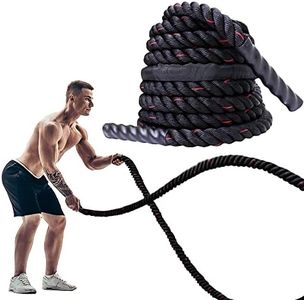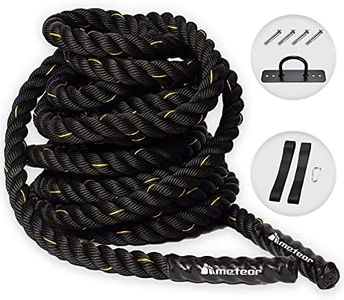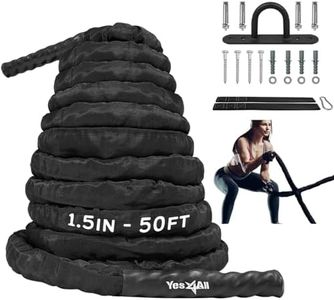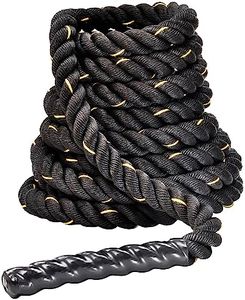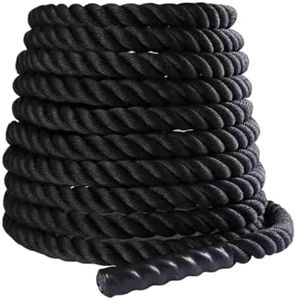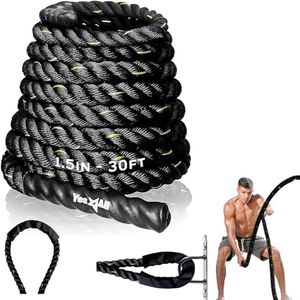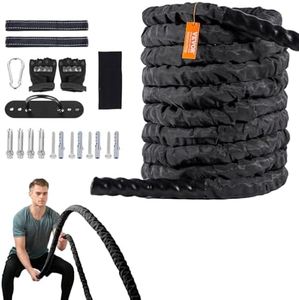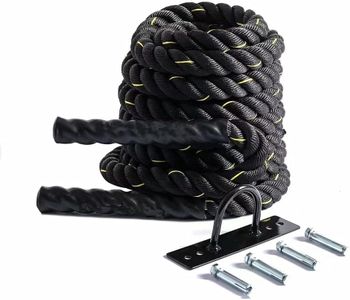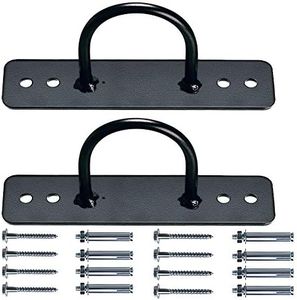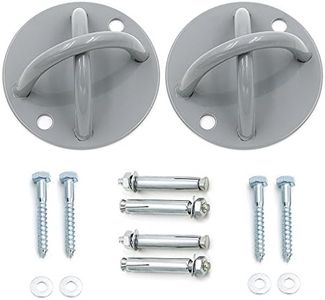We Use CookiesWe use cookies to enhance the security, performance,
functionality and for analytical and promotional activities. By continuing to browse this site you
are agreeing to our privacy policy
10 Best Battle Ropes
From leading brands and best sellers available on the web.By clicking on a link to a third party's website, log data is shared with that third party.
Buying Guide for the Best Battle Ropes
When choosing battle ropes, it's important to focus on finding the right fit for your workout goals, physical space, and comfort. Battle ropes are excellent tools for building strength, improving cardio endurance, and engaging multiple muscle groups. To get the best results, you should consider key details like the rope's length, thickness, material, and the type of handles. By understanding what these features mean, you’ll be more confident selecting the rope that matches your fitness level and workout space.LengthLength refers to how long the battle rope is from end to end. This is important because a longer rope offers more resistance and allows for more versatile exercises, while a shorter rope takes up less space and is easier to control. Typical rope lengths are 30, 40, and 50 feet. Ropes around 30 feet are best for beginners, smaller spaces, and lighter workouts, while 40 and 50 feet ropes are suited for more intense full-body workouts and larger workout areas. Think about your skill level and available space to decide which length best suits your situation.
ThicknessThickness is how wide the rope is, most commonly measured in inches. This affects the grip and weight of the rope, making it harder or easier to handle. Standard thicknesses are 1.5 inches and 2 inches. A 1.5-inch rope is easier to grip and better for general fitness, beginners, or those with smaller hands. A 2-inch rope is heavier and more challenging, providing a tougher grip workout but may tire you out faster. Consider how strong your grip is and what level of challenge you want when choosing the thickness.
MaterialBattle ropes are usually made from either poly dacron, a blend of various synthetic fibers, or manila, a natural fiber. Material is important because it affects the durability, feel, and indoor/outdoor suitability of the rope. Poly dacron ropes are durable, flexible, resist fraying, and are suitable for both indoor and outdoor use. Manila ropes have a rougher feel, can shed fibers, and are more suited for outdoor use. If you want a long-lasting, low-maintenance rope, choose a high-quality synthetic blend. Your choice should depend on where you plan to use the rope and your preference for feel and maintenance.
HandlesHandles are the ends of the rope, often covered with a rubber or heat-shrink coating to help with grip and comfort. Good handles help prevent blisters and make the rope easier to hold during long workouts. Handles typically vary in length and material thickness, with longer handles giving more grip space and better protection. If you plan longer workouts or have sensitive hands, prioritize ropes with long, well-covered, and comfortable handles.
Anchor OptionsAnchoring refers to how the rope is secured at a fixed point for use. Some battle ropes come with anchor kits or have a reinforced center to attach to a hook, post, or wall mount. Having a secure anchor is important for safety and for allowing the correct movement of the rope during exercises. If your workout area doesn't have a natural spot to tie or wrap the rope, consider ropes that come with an anchor kit or look into purchasing one separately. Always match your setup to your available space and make sure your anchor point is sturdy enough.
